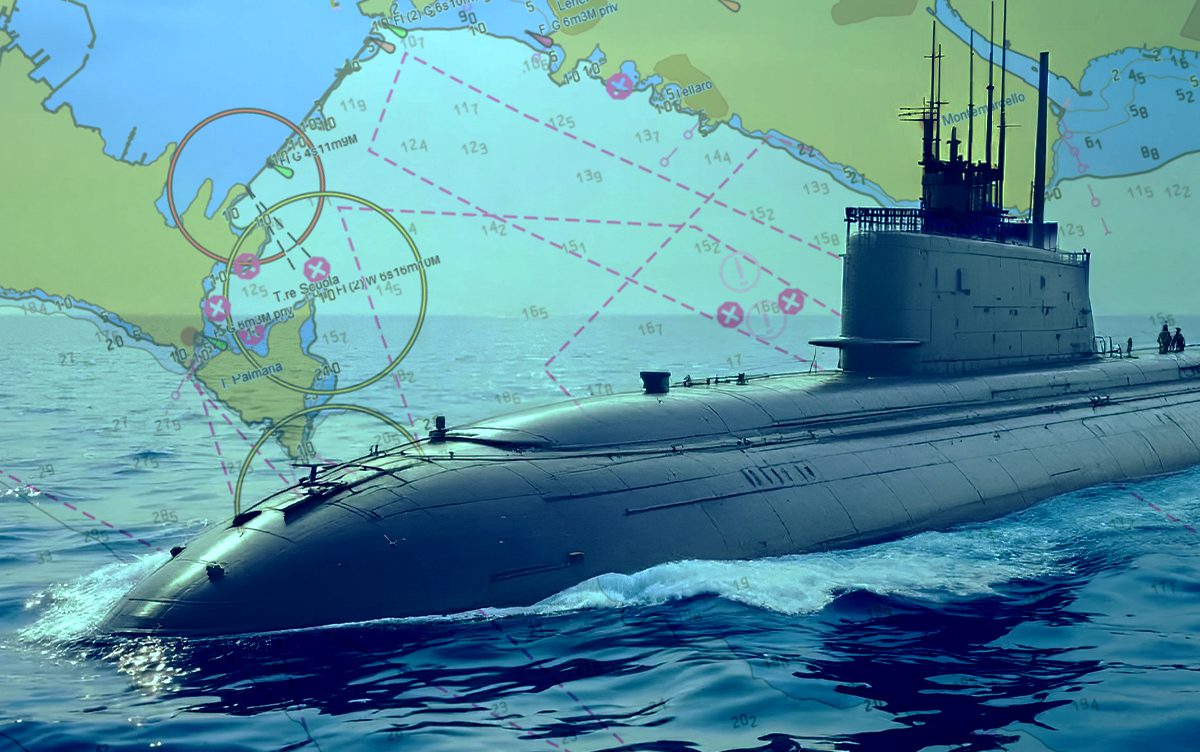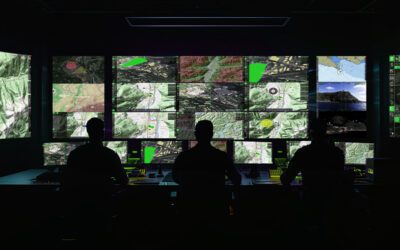Underwater Augmented Reality is an emerging application of AR specifically designed for underwater use. From diving and research to navigational aids and underwater defence strategies, AR is changing the way we see the world underneath the ocean waves.
In this article, we will take a closer look at this new frontier and investigate how augmented reality underwater translates into practical applications for both civilian and military use. We’ll examine how underwater augmented reality differs from systems used on land or in the air, taking into account challenges such as navigation issues and the extreme hostility of an underwater environment.
We’ll discuss how maritime technologies are beginning to utilise AR and Enhanced Reality systems, and their role in various applications. We’ll also introduce the latest AR development from FlySight, our underwater optronic mast console, and how it can improve both situational awareness and maritime safety.
Unique underwater challenges
While the principles behind the technology are similar, if not the same as land or air-based AR, underwater augmented reality faces some unique challenges. Limited visibility is a primary obstacle facing AR in underwater situations, along with other challenges such as light distortion and significant communication constraints, particularly in submarines and submersibles. Something as simple as a break in a GPS signal can render a system inoperative very easily.
However, these challenges are driving the innovation of underwater AR forward. As AR becomes an increasingly integral part of marine technology, the scope for AR use in a wide variety of ocean-going applications is expanding.
What do we mean by Augmented Reality?
When we discuss Augmented Reality, also referred to as Enhanced Reality, we’re specifically referring to programs and systems that enhance the environment and increase the level of information provided to users within that environment. For example, in a helicopter cockpit, AR consoles include multi-layer maps and data sources that can be overlaid onto real-time images, providing operators with a far more detailed understanding of the environment. This increase in situational awareness is not only beneficial to the mission’s success but also represents a significant advancement in the safety of both the aircraft and the crew.
While the environment may be very different, underwater craft and their crew need the same kind of support when it comes to situational awareness in particular. As operators have no actual ‘visual’ reference points to work with (there are no windows on the average submarine!), they need as much digital data as they can gather. Generally, this comes from systems such as sonar. However, underwater augmented reality is now bringing a new level of detail to submersible operations.
Navigational issues
While the heart of any nautical navigation system is the humble compass, it can only supply relatively simple (albeit essential) information on direction and bearing. For underwater navigation, other issues come to the fore, such as the correlation between the ocean floor and the underwater topography. Put simply, a compass can’t tell you if you’re at the correct depth or position to avoid an underwater feature that could endanger the vessel. Situational awareness in submarines and submersibles, as well as ships operating in shallow water or near sandbanks, for example, must take into account far more than just depth and direction.
While sonar provides a certain amount of information, underwater augmented reality can introduce a new level of detail into maps, charts, and even visual observations taken via periscope. By increasing the amount of data available, underwater AR effectively opens up an observation window for operators to ‘see’ the space around them.
What is the potential of Augmented Reality in underwater environments?
Like all other applications, underwater augmented reality has the potential to impact various maritime uses. Because it can be easily grandfathered onto legacy systems and run alongside them, it’s actually remarkably easy to integrate AR into an existing underwater craft. As long as the technology is compatible and there is no breakdown in communication between the legacy system and the newly introduced AR, the two systems can become symbiotic and mutually beneficial.
For submarines and submersibles, AR can easily be overlaid onto underwater cameras and periscope streams. This enables both manned and unmanned craft to benefit from the technology, as a live stream enhanced with AR is equally of use to topside operators as it is to those actually in underwater craft. AR can overlay more detailed topographical charts and maps, providing the observer with a far more detailed visual of their surroundings, thereby increasing situational awareness and enhancing their decision-making process.
Tactical data is also ripe for AR applications, especially in combat or defence roles. As long as there is a strong connection between the data source and the recipient vessel, up-to-the-minute information can be relayed to a deployed craft, informing them of any changes in combat situations. The data can also be used to enhance the effectiveness of threat detection or to identify a target, such as a boat suspected of being a smuggler, a hostile underwater craft, or any other situational threat.
Underwater Augmented Reality can also improve logistical concerns such as depth perception, especially in regions where the terrain changes (close to subduction zones or along underwater fault lines, for example). AR information on the ocean floor terrain could also include underwater cables, the location of pipes, and drilling platforms, which are particularly hazardous to submersibles.
How Augmented Reality can enhance coordination
In addition to situational awareness, AR can support operators in several other ways, including task management, visual communication in low-visibility conditions, and real-time guidance. As long as the software used is fully integrated and user-friendly, it can deliver real results in challenging situations, improving the operation of the craft and those working with it. The higher level of informational input makes decision-making easier and more accurate, even in a highly fluid situation.
Real-life uses for underwater augmented reality
The applications for underwater augmented reality include both civilian and military operations. For example, commercial diving operations and salvage diving could be made much easier by the level of up-to-date information on target locations, conditions, topography and even current patterns. In search and rescue operations at sea, AR can add detail to a featureless ocean, including sending the last-known coordinates of a lost vessel to a SAR unit and taking into account weather conditions, current patterns, and shipping lanes.
For scientific research, AR can add important information to research missions, including geological data and terrain information that could demonstrate the effects of warming oceans on coral reefs, for example.
The applications of underwater augmented reality in military operations are crucial, providing additional information that can significantly impact how a mission is executed.
The challenges of using augmented reality underwater
There are, however, some limitations and issues that need to be addressed, as well as specific situations where AR may be problematic. The exceptionally high pressure at depth can have a profound impact on data transmissions at low depths. Those data transmission issues can mean that real-time links can be broken, causing a loss of information at a crucial point in the operation. While not common, the probability of breaks in communication links has to be considered when using augmented reality underwater.
How OPENSIGHT is tackling the challenges of underwater augmented reality
FlySight’s OPENSIGHT platform is best known for its applications in helicopters and airborne systems. However, the innovative Underwater Optronic Mast Console takes underwater augmented reality to a whole new level. FlySight delivers advanced maritime technologies for underwater operations, supporting submarine systems, tactical awareness, threat detection, and mission-critical communication. Our modular, scalable solutions are designed for extreme conditions and high-security environments, and can be utilised to enhance situational awareness and safety in maritime settings.
The Underwater Optronic Mast Console is a turnkey solution for electro-optical data processing in maritime conditions. Enhanced video quality and the combination of information from different sources ensure operators have a greater level of situational awareness, as well as the use of post-processing tools to analyse intelligence data in real-time.
Features include:
- Video processing algorithms for image enhancement, including super-resolution
- Real-time vector overlay superimposition
- Visual and infrared real-time video compensation and fusion
- Image mosaicking for both planar and 360° acquisitions
- 3D coastline reconstruction
- Automatic target detection and classification
You can find out more by downloading the OPENSIGHT Underwater Optronic Mast Console brochure or by contacting us today to learn more about the OPENSIGHT platform’s augmented reality capabilities.




